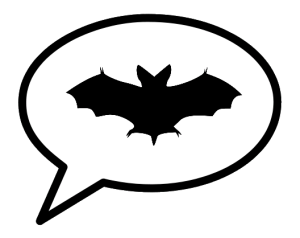Write On – Show, Don’t Tell
So, we’ve done our first pass edit. We’ve plugged the plot holes and the story is hanging together as a marvellous creation that has a beginning, middle and end. Everything’s tied together in a chronology that could work, and no character has accidentally been forgotten half way through. Surely that’s our job done, right?
Not quite. Writing a book is a little like carving a sculpture. First you quarry the basic story stone out of your subconscious, and crudely hew it into the right rough shape. That was your first draft and first revision pass. Now you’re going to put down the saw and pick up the chisel – it’s time for the fine work.
For this pass, we’re going to go through the story we have already, and see where we can make it better. Start again right at the beginning and consider how you have told the reader what you have told them.
This is where most writing books pull out the most well known piece of writing advice that ever existed – Show, don’t tell. Which is all very well, but what the hell does ‘show don’t tell’ actually mean?
Well, for example, suppose you want to open your book with a quick precis of your character’s backstory. My first reaction would be ‘don’t’. Why do we need to know that he was brought up in Northampton and had a pet dog called Spot? Is that relevant? If it’s not relevant, can we perhaps not put it in at all, and just start with the story?
But if you insisted – if you said ‘No, my character’s backstory is the most interesting thing ever, and will be essential to understanding why he chooses to ignore the evidence that his wife is an alien until it’s too late’ – I would have to say Okay then, your funeral.
Let’s consider how to show, rather than tell, your character’s backstory.
When you ‘show’ something, you think up a scene in which that thing becomes obvious to the reader. So if you want to show that your character was afraid of bats ever since he fell down the well in the grounds of his mansion (I wonder where I got that example from), you write a scene in which you allow the reader to feel what it was like for a boy at play to feel the ground crumble around him. You evoke the terror of falling by making the reader feel like they are falling, letting them feel the punch of rocks against their back as they crash into the ground, drawing in vivid detail the stench of ammonia and the crawling, flapping blackness of a bat colony as it swirls past his face.
We’ll call him ‘Bruce’ shall we? So if you were doing this, you would end up with something that read a little like this:
Bruce’s foot plunged into the earth, dislodging stones, wrenching his knee. He tried to scramble away but the long grass was sappy and slick beneath his weight. A burst of green smell and he slid sideways, arms flung out, gripping for the boulders that fell away beside him. Rushing noise and rushing darkness, something whipping past his face. His back slapped into something sharp edged that punched the wind out of him. Stones smacked into his face, lights bursting behind his eyes, and then he hit the ground.
The stench awoke him, acrid and brilliant as a desert sun – the only brightness in the endless dark. He felt the darkness like a plastic bag taped around his face, stopping him from breathing, thinking, had to force himself to wobble to his feet. That was when he heard them, above him. Something rustling. A single huge rustling, and a drip, drip, drip of what he thought at first was rain. But it was urine, concentrated and toxic, like acid on his skin.
“No!” he choked, wanting to crawl out of his own body at the touch. “No!”
…..
And so on. We haven’t even seen the bats yet. At some point he’s got to find his way out of the cave into a place where there is enough light to see them, and then he’s going to have an epiphany about using the power of that image to turn his fear into other people’s fear. But hopefully you see what I mean about ‘showing’. In this example, I’m not telling you that Bruce got his bat idea after being frightened by bats, I’m showing you what it was like for him to be frightened by bats and come up with his familiar idea.
There are things to notice about this. One is that ‘showing’ produces a more viscerally engaging and entertaining thing to read. Another is that ‘showing’ takes up an awful lot of words and space. And what that means is that the pundits who say ‘Always show, don’t tell,’ are wrong.
Show any time you want your reader to really live through the information. Any time you want them to remember it as something dramatic that happened to them. Any time you want them to feel an emotional connection to the information.
But telling is useful and legitimate too. Suppose you just want to get information to the reader with as little fuss as possible? Suppose you’re already in the middle of an exciting scene and you don’t want to interrupt it to have another nested one to explain something you could tell them in a paragraph? Then I say do that instead. A whole load of unnecessary waffle can be cut by a conversation between two characters that goes a bit like this:
“Why the bat motif?”
“Oh, he fell down a well when he was young. Figured that the things that terrified him then would terrify others now. And maybe when he became what he feared, he thought it wouldn’t fear it any more.”
“Crazy.”
“Yeah, but it seems to work.”
So, that was a long-winded sidetrack to my point about editing. We’re going to have many many editing passes, but the purpose of this one is to decide which things you want to show and which things can be passed over quickly by telling them. Obviously that’s very much up to you, but I would sum it up this way:
If you just want to quickly get across information with no emotional impact – tell.
If you want to make an emotional and visceral impact with the scene – show.
It’s up to you as the author to decide what should be minimized by telling or maximized by showing, but I would also say if you always do one, try to do the other one occasionally, just for variety. Variety will help stop your reader from either being burnt out by all this excitement, or bored by all this exposition.
Next time, adding more interest. Coolness! 🙂

